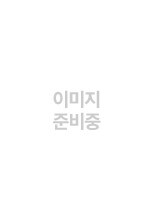-
205호 병실: 한국현대단편선
205ho byeongsil: hangukhyeondaedanpyeonseon
Korean(한국어) Printed/Published WorkKang Kyung-ae et al / 강경애 et al / - / -
강경애(1907~1944), 최정희(1912~1990), 임옥인(1915~1995) 등 여성 소설가 9명의 단편소설 12편이 수록되어 있다.
-
그 가을의 사흘 동안
Geu gaeurui saheul dongan
Korean(한국어) Printed/Published WorkPark Wansuh / 박완서 / 1985 / KDC구분 > literature > Korean Literature > Korean Fiction > 20th century > Short Story
This is a short story by Park Wansuh, published in Hanguk Munhak in June 1980.
-
그 남자네 집
Geu namjane jip
Korean(한국어) Printed/Published WorkPark Wansuh / 박완서 / 2004 / KDC구분 > literature > Korean Literature > Korean Fiction > 21st century
This novel was published in 2004 to commemorate the 50th anniversary of Hyundae Munhak, based on the short story of the same titled that was published in Literature and Society in 2002. It reminisces about the unfulfilled first love set in post-Korean War society.
-
그 많던 싱아는 누가 다 먹었을까
Geu Manteon Singaneun Nuga Da Meogeoseulkka
Korean(한국어) Printed/Published WorkPark Wansuh / 박완서 / 1992 / -
-
그 산이 정말 거기 있었을까
Geu sani jeongmal geogi iseoseulkka
Korean(한국어) Printed/Published WorkPark Wansuh / 박완서 / 1995 / KDC구분 > literature > Korean Literature > Korean Fiction > 20th century > 1945-1999
This is an autobiographical novel by Park Wansuh, published in 1995. In this works, the author novelized the pain, wounds, and chaos she experienced from 1951 to 1953, including the Korean War, the death of her brother, and her own marriage.
-
그대 아직도 꿈꾸고 있는가
Geudae ajikdo kkumkkugo inneunga
Korean(한국어) Printed/Published WorkPark Wansuh / 박완서 / 1989 / KDC구분 > literature > Korean Literature > Korean Fiction > 20th century > 1945-1999
This is a novel by Park Wansuh, published in 1989. It received positive response by the readers for scrutinizing the issues of women’s liberation, including the family register systems, that have become inherent in society from the level of society, institutions, and conventions.
-
꿈꾸는 인큐베이터
Kkumkkuneun inkyubeiteo
Korean(한국어) Printed/Published WorkPark Wansuh / 박완서 / 1993 / KDC구분 > literature > Korean Literature > Korean Fiction > 20th century > 1945-1999
This is a short story by Park Wansuh, published in Hyundae Munhak in January 1993. It projects the contradictions and suffering that women experience in Korean society, ruled by male-dominant Confucian traditions.
-
나목
Namok
Korean(한국어) Printed/Published WorkPark Wansuh / 박완서 / 1995 / -
This book examines the significance of the Korean War in Korean history through personal history. This is writer Park Wan-suh’s debut novel and is considered to occupy an important place in Korean realist literature.
-
나의 가장 나종 지니인 것
Naui gajang najong jiniin geot
Korean(한국어) Printed/Published WorkPark Wansuh / 박완서 / 1994 / KDC구분 > literature > Korean Literature > Korean Fiction > 20th century > Short Story
This is a short story by Park Wansuh, published in the fall issue of Sangsang in 1993. Through a phone conversation between two people, this story conveys the grief of a mother who lost her son during a democratization movement in the 1980s. By exposing heavy and sensitive political and social issues through light chatter, the story questions the meaning of the bleak reality.
-
너무도 쓸쓸한 당신
Neomudo sseulsseulhan dangsin
Korean(한국어) Printed/Published WorkPark Wansuh / 박완서 / 1998 / -
This is a collection of short stories by Park Wansuh, published in 1998. In the short stories, the author concentrates on the thoughts and feelings of people who go unnoticed in life, such as old couples, elderly people, and a mother with dementia. Through a deep understanding of humans, these stories give a new look at “the elderly.”
Original Works
We provide information on Korean literature titles (classical, modern and contemporary) in multiple languages.










